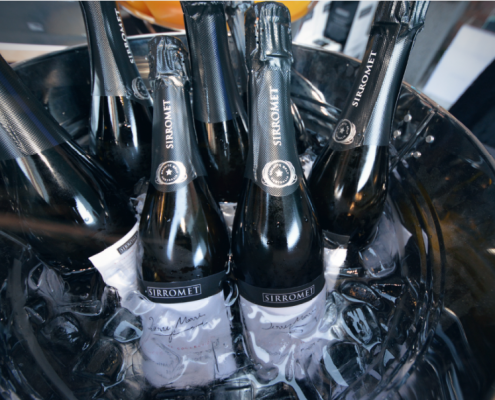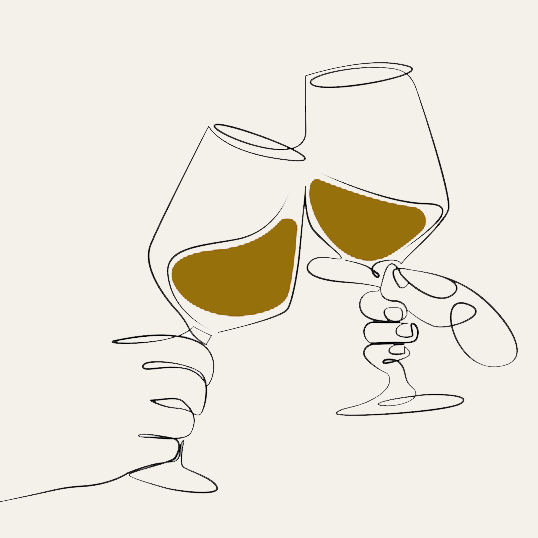With a glass of bubbles being the ubiquitous and ever fashionable drink of choice for any celebration, what better way to kick off the festive season than with a glass of your favourite sparkling wine?
But have you ever wondered how we make it? Let our Chief Winemaker Adam Chapman guide you through the fine art of making great sparkling – it’s more involved than most people think!
IT ALL STARTS IN THE VINEYARD
The structure of a premium sparkling wine rests upon its natural high acidity, which provides both length of palate and the ability to age and develop into something magical. As usual, it all starts in the vineyard. Grapes intended for sparkling wines will be the first to come off the vines each season, due to the need for lower sugar levels and higher acidity.
When growing and harvesting sparkling grapes, we need to think a little differently than we do when making table whites and reds. Counter-intuitively, fruit intensity and flavour take a back seat to that all important acidity – we are looking for super clean, early harvest (but not green) fruit that will make a “base wine” that is tight, fresh and racy – but also thinner in body and more neutral in flavour than a young fruity table wine.
We hand-harvest the Chardonnay and Pinot Noir sparkling grapes for our Signature Collection white sparkling in early February each year. Chardonnay contributes a bracing acidity, green apple and citrus notes and good structure. From Pinot Noir comes delicate white strawberry, a hint of colour and the necessary body and texture for the back palate.
FIRST: WE MAKE A BASE WINE

At the winery, the different varieties are handled separately – blending comes later. We de-stem and gently crush the berries followed by a light pressing, as we don’t want to extract excess phenolics into the juice (that’s a winemaking term for the bitter compounds in skins and seeds). We then cold settle for 48 hours, then the clear juice is racked away from any settled solids. The base wine is made by innoculating with a cultured sparkling yeast, beginning a slow, cool fermentation that will last 3-4 weeks until all the natural sugars are converted to alcohol. The brand new, bone dry base wine is racked off the gross lees (dead yeast) and allowed to naturally clarify and stabilise – this stage can’t be rushed.
Then comes the blending of the base cuvée with lots of bench trials involving different batches of Chardonnay and Pinot Noir, always looking for balance, precision and clarity. Here is where the skill of the sparkling winemaker comes into play – to be able to recognise the potential of the bracingly acidic new base wine to develop and blossom in the bottle, as we embark on the processes of Tirage and Méthode Traditionelle (bottle fermentation).
TIME TO TIRAGE

Tirage means “to pull or draw (out)” in French and once referred to the drawing out of wine from barrel into bottle. Now we use this term to describe the bottling of a sparkling base cuvée, adding a specially acclimatised yeast culture to allow a natural bottle fermentation. Carbon
dioxide gas is a by-product of fermentation – a little sugar is added along with the yeast to create just enough carbon dioxide to create the “sparkle in the sparkling”- these tiny bubbles produced by yeast are much finer and more persistant than the bubbles in soft drink (which are created by carbonation). Because we are fermenting in a closed bottle, the bubbles can’t escape and are trapped in the wine.
The bottle ferment can take anything from two weeks to three months to complete, but even then, the wine is not ready. Ageing a traditional sparkling wine on the yeast lees is a critical process to produce the creamy fine mousse and the classic shortbread biscuit and toasty, fresh-baked bread (along with hints of Vegemite) characters that we love in premium sparkling. These flavours emerge over time as the yeast cells break down in a process called “autolysis”, which only starts to occur after about 6 months in bottle. We usually allow at least 12 months (and up to 5 years) ageing for all our premium sparkling wine. It’s a long time to wait and it’s exciting for us to revisit the wines as we move on to the next stages of riddling and disgorging.
RIDDLING

Méthode Traditionelle on a bottle label means you are drinking the wine from the same bottle it was fermented in. But how do we get all that cloudy yeast out? It’s a painstaking process called riddling. We turn each bottle upside down and hand manipulate the yeast to ”riddle“ (fall down the inside of the bottle) and compact itself in the neck. Fine suspended yeast solids then slowly settle out of the wine until the wine is completely clear.
Historically in Champagne, wines were hand-riddled and turned each day in traditional riddling racks over many weeks. Modern methods have shortened this process to about 8-10 days. After shaking the yeast down by hand, the bottles are placed upside down in large bins, each holding 300 bottles, that can be tilted from side to side, allowing a more efficient riddling. The length of riddling time depends on the nature and age of the sparkling wine base and wines are inspected each day for clarity.
TOUCH OF SWEETNESS

Nearly all sparkling wines receive a small dose of “liqueur” as part of the finishing process. Remember all that acid that was so important in the base wine? Well it’s still there! In most cases the highly acidic wine needs just a little sweetness for palate balance, so it is not overly dry or sour. We typically add between 3 to 25 grams per litre of ”dosage liqueur” depending on the style we’re aiming to create: dry, off-dry or semi-sweet. Our liqueur is usually a sweetened or ”sticky“ style of wine.
BOTTLE IT UP

Take a good look at your next glass of sparkling wine. That bright and sparkling clarity belies a cloudy past – before the “yeast lees” are removed and the wine is then sealed under pressure with a cork and wire musselet. This process of finishing sparkling wine – part of the Méthode Traditionelle – is called disgorgement or disgorging. The riddled bottles are chilled down to 4 degrees and then placed upside down in a “neck freezer” that freezes the plug of settled yeast.
Special machinery then removes the cap and the tiny “yeast ice-block” shoots out of the bottle via the pressure of the carbon dioxide in the wine. Each bottle is then dosed with liqueur and topped with dry wine, before being sealed with a cork and wire musslet, hooded and labelled. Finally, after years of waiting and anticipation, those delicious bubbles are ready to be poured in your glass, just in time for Christmas!



